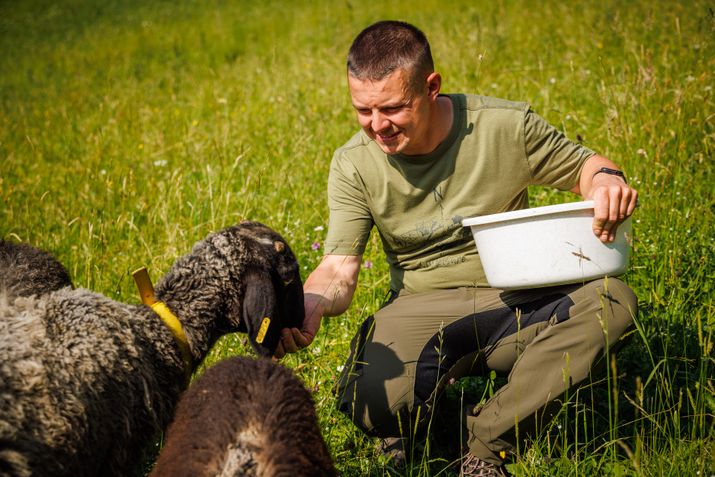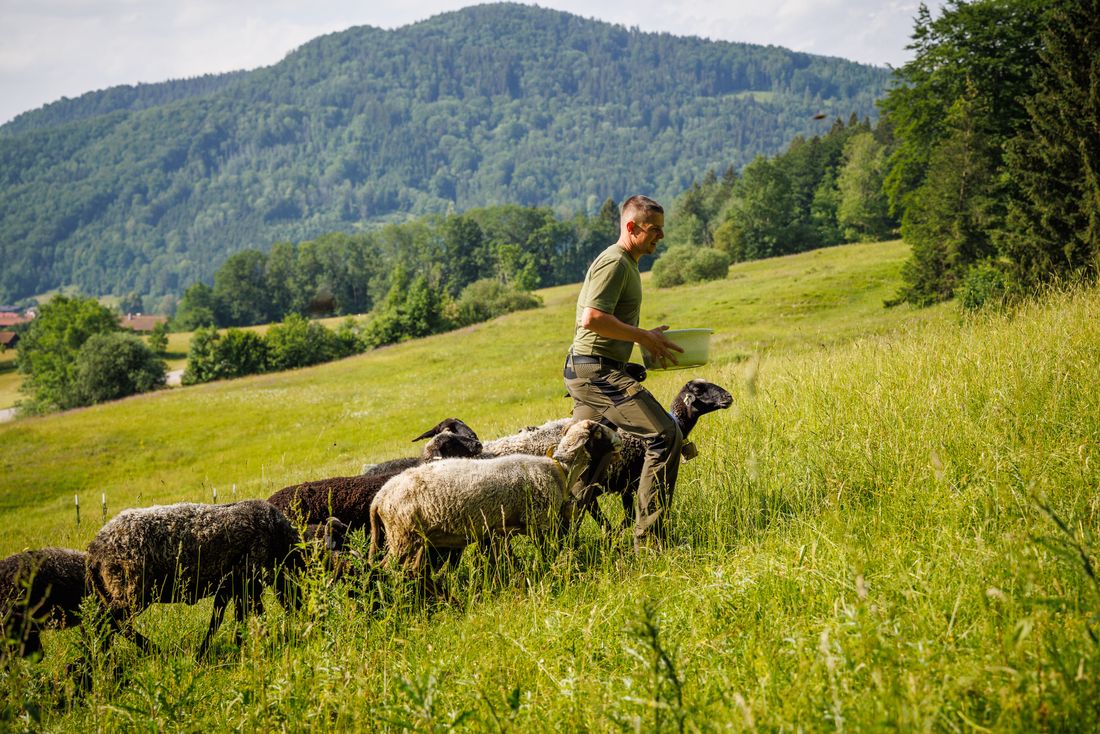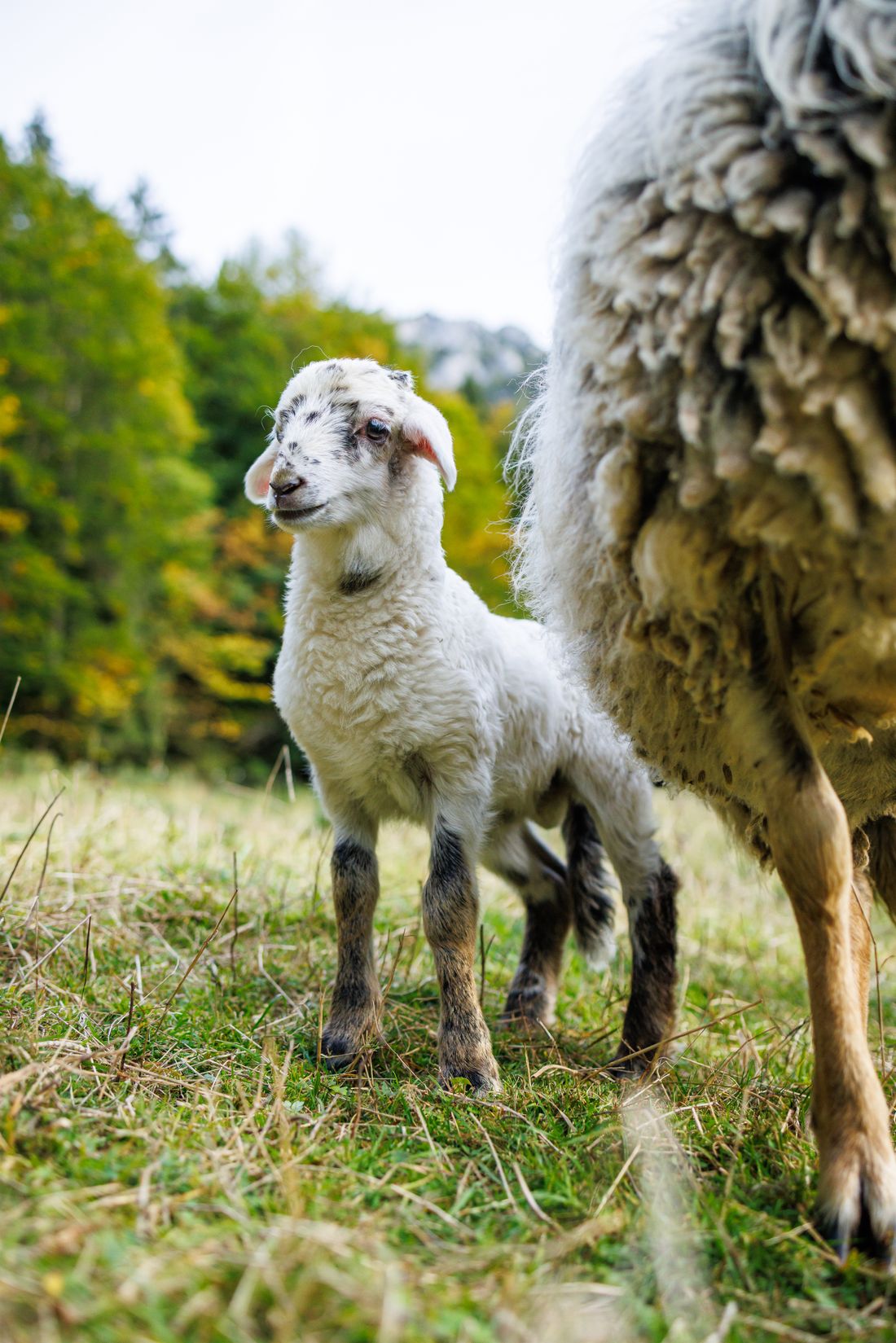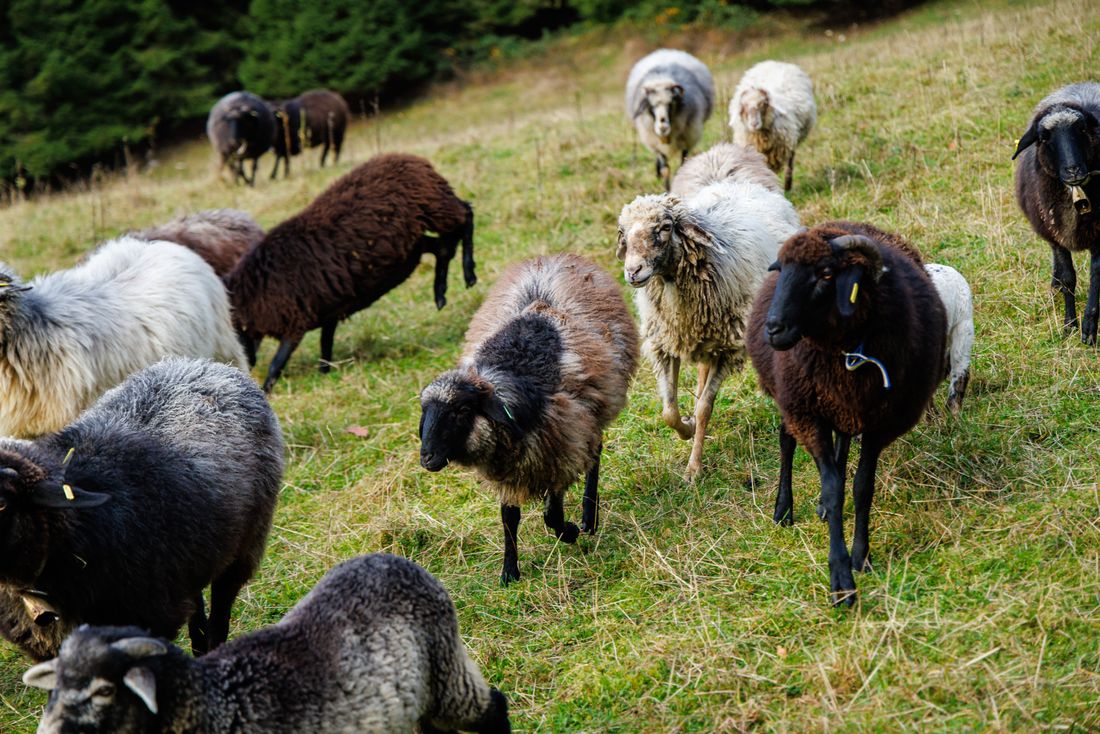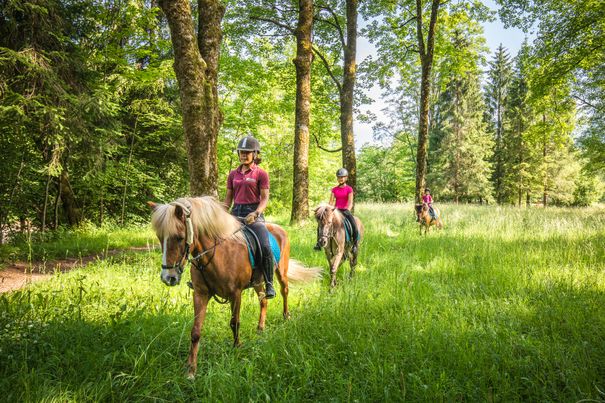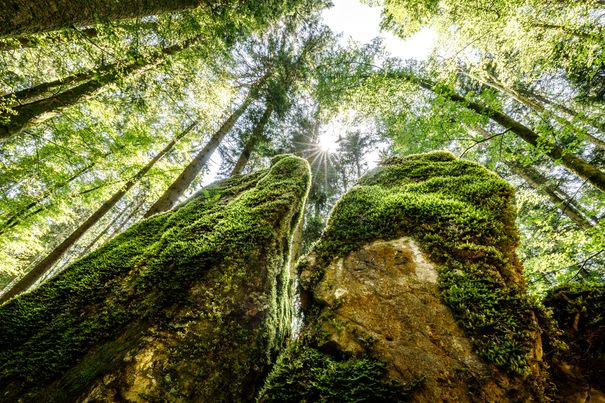Important information at a glance
The delicate sound of a bell comes closer. With it, the joyful bleating of a sheep. It is Susi, the leader sheep who reacts straight away to Lisa’s calls. She runs swiftly between the trees. The rest of the herd follows her. "We had started off small at first, with the somewhat lower-maintenance Cameroon sheep at our „Obstangerl“. Then we came across the old, local breed of the Alpine stone sheep. These animals have a calm manner and are very trusting if you pay attention to them. They even come of their own accord, when you call them,” says Lisa and is nudged by Susi as a greeting. Despite this, Markus has a bowl of treats with him. This always attracts them.
Alpine stone sheep are excellently adapted to the alpine terrain and cope with cold, heat, wetness and dryness. They have a slender build. As mountain specialists, they possess very hard claws. Most rams and also some of the female animals are horned. Rams weigh 60 to 75 kilograms, ewes 45 to 60 kilograms. They normally give birth to two lambs a year and have a high milk yield. Their heads have a straight profile and a slightly crooked nose. Their pointed ears droop slightly. The Alpine stone sheep were supplanted in animal husbandry because they generate less profit. However, the animals’ meat is tasty and tender, and has hardly any fat deposits. The colouring and markings of the Alpine stone sheep are motley and varied. Their wool consists of long kemp and wavy, fine and shorter wool fibres. Unlike merino wool they are rather coarse. “But it’s a great raw material with valuable ingredients. I even use the wool as a fertiliser in the windowboxes,” says Lisa.
